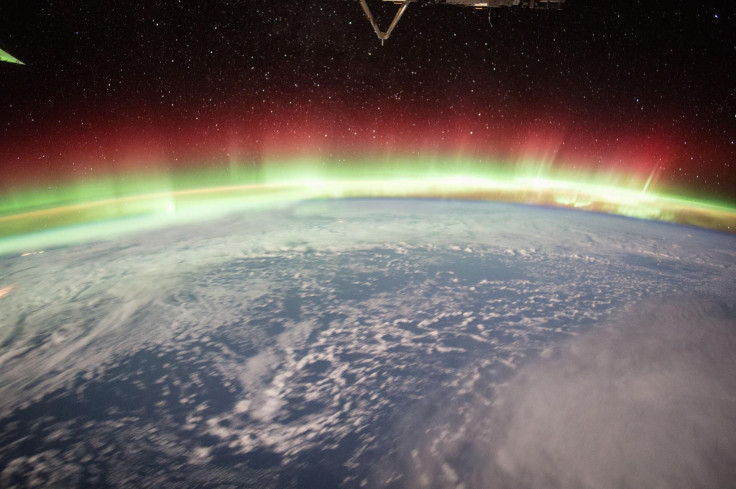Science Mystery Solved: Aurora Light Named Steve Is Gas Stream In Earth’s Sky

We’ve found something new in the dazzling display that is the northern lights, and its name is Steve.
It’s actually a hot and quickly moving ribbon of gas that scientists hadn't noticed until social media and a bunch of amateur astronomers stepped in. The European Space Agency said it appears as a purple streak of light when the colorful aurora borealis lights up the night sky in the northern hemisphere.
University of Calgary Professor Eric Donovan spotted the aurora feature while looking through the photos of astronomy buffs in a group called the Alberta Aurora Chasers. The enthusiasts were calling it a “proton arc,” the ESA said, but that seemed impossible.
Read: Photos Show Night Lights on Earth from the Sky
The auroras we see in the night sky appear when charged particles are blown toward Earth from the Sun and interact with the gases in our atmosphere, and the aurora’s shape comes from how those particles move when they meet Earth’s magnetic field. According to Spaceweather, electrons cause more narrow aurora features, such as Steve, while protons make for broader arcs of color. Some of the proton-produced light is not even visible because it’s UV light the human eye cannot perceive.
Donovan partnered with the ESA’s Swarm mission, which studies Earth’s magnetic field, to “match a ground sighting of Steve to an overpass of one of the three Swarm satellites,” the space agency said. The satellite went right through it, about 180 miles above the planet’s surface, detecting a temperature increase of thousands of degrees. Steve was a 15-mile-wide stream of gas that was flowing west at nearly 4 miles a second, compared to gas around it that was moving at only about 30 feet a second.

“A better understanding of the aurora helps to understand more about the relationship between Earth’s magnetic field and the charged atomic particles streaming from the Sun as the solar wind,” the ESA said.
Auroras are not unique to Earth. Scientists have detected and captured photos of auroras on other planets in our solar system, including Jupiter, Saturn and Uranus.
See also:
© Copyright IBTimes 2025. All rights reserved.



















